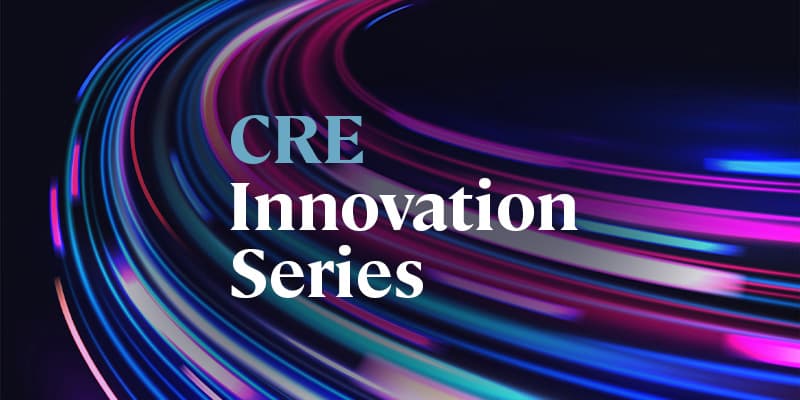Key highlights
Before taking on a major technology project, it’s prudent to sit down and get input from key stakeholders
When planning a digital transformation project, it is important to consider the bigger technology ecosystem
It is also important to look at your whole technology stack to make sure that things are going to integrate
Finding good partners to work with can help to deliver a smoother transformation project
Allocating sufficient resources is another step to keep project schedules on track
Digital transformation projects are a necessity in an environment largely defined by its embrace of constantly evolving technology – and in today’s market, it is more important than ever to stay ahead of the curve.
As advances in software continue to move exponentially faster than they did over the last two decades, digital transformation has become a top priority for companies – especially those looking for greater efficiency by simplifying their technology stack and reducing duplication of data entry into multiple systems. Some firms might have up to 100 different data systems – all of which need to be seamlessly integrated and talking to each other. Others want better, faster access to data, or may need to replace outdated legacy systems.
During the pandemic, everyone wanted greater insight into the latest trends pertaining to rent collections and leasing activity. More recently, bank failures sparked demand for information around potential exposure risk, such as how many tenants had letters of credit or banked with Silicon Valley Bank. On top of that, real estate companies must stay on top of changing requirements from different investors and partners. “People want answers in real-time. So, you've got to be able to provide that data very quickly and accurately, and those are the challenges of an evolving tech stack,” says Melanie Colbert, a Principal at LBA Realty.
Colbert was one of four panelists that recently discussed the topic of How to Safeguard Your Digital Transformation Project at the 2023 Altus Connect conference. The panel dug into key challenges around keeping projects on track, as well as sharing insights and lessons learned from current and past digital transformation projects.
Where to start?
Companies can take several steps in the pre-planning phase to ensure projects remain on track, including developing a well-defined strategy and getting buy-in on that strategy from top to bottom. Individual strategies vary widely depending on the circumstances. “We’re not trying to unwind or transform 20 to 30-year-old software. We’re really trying to make sure we can continue to scale and be efficient in the future, so strategy around that is extremely important,” says Jess Ross, Senior Vice President, Financial Planning & Analysis at Link Logistics. As one of its preliminary steps, Link Logistics partnered with One11 Advisors to formalize a strategy, which also helped to get C-level support in moving the project forward.
Some firms are finding themselves in a position to update legacy systems. For example, LBA Realty is a 32-year-old private REIT that engaged in a digital transformation project to simplify the technology stack it had at the time. The company had systems such as ARGUS, MRI and Kardin, and every time one system made a change, they had to manually make changes to the other systems. Rather than building a new system from the ground up, the goal was to eliminate one of the systems. “Before you take on any of these technology ventures, you really need to sit down and get input from every stakeholder and someone from every function, so that they have a say and will be a cheerleader for the process,” says Colbert. “If you don’t get buy-in from every function, you’re really going to struggle with implementation.”
Finding good partners to work with can also help to deliver a smoother transformation. LBA Realty used a consultant when the company started its digital transformation journey. Having an experienced resource to help provide guidance through implementation is helpful. In addition, the company created small teams from each department who were involved in the process.
Consider the bigger ecosystem
When planning a digital transformation project, it is important to consider the bigger technology ecosystem. “All of these systems are really there for one purpose. It's to get the quickest access to the most accurate data to make decisions on what to do with investments,” says Vlad Starobinets, a Senior Director at the Altus Group. It would be great if every property returned 30% without having to do any work. But that's not the case. You've got to manage your portfolio, and sometimes you have to manage those different puzzle pieces to access the data, he adds.
A common theme with legacy systems is that there is an over-customization that makes it difficult to manage upgrades or fix errors. For example, Welltower had customized its JDE system to the extent that it took a year to do an upgrade. “That is just unbelievable in this day and age. So that's part of the reason we undertook this transformation,” says Ann Jordan, Assistant Vice President, Financial Operations at Welltower Inc. However, the company opted for a different approach in its transformation in building out Yardi. Instead of taking current processes and procedures and building Yardi to fit, they instead built processes around how Yardi works. “I'm thrilled with the way it's turning out. We have streamlined so very many things that we would not have been able to do had we gone in the opposite direction,” she says.
Given the full property management system change, Welltower also had to think of a variety of different upstream and downstream components. For example, its work order system wasn't integrated. However, they did take information from that system to pull into JDE, and they had to think about how that would happen in the new environment.
It is important to look at your whole technology stack to make sure that things are going to integrate, adds Colbert. In commercial real estate, every company has their own chart of accounts. So, it is important to make sure the MRI chart of accounts integrates with ARGUS, PMWeb and others. “There are just so many different systems, you have to make sure you understand how they're going to communicate and how they're going to integrate, and you have to make sure you have a good strategy on that integration,” she says.
Keeping projects on track
Link Logistics created a digital transformation roadmap that included key timing around things like blackout for different teams within the company. The company also supplemented its internal team with outside consultants to help keep the timeline on track. “All of these projects were staged based on resource availability and priority, and they were very carefully thought through,” says Ross.
Allocating sufficient resources is another step to ensure project schedules remain on track. Welltower established a clear timeline goal and, from there, they determined how many full-time resources they would need to accomplish reach that finish line. To support this process, they ended up taking some people out of their current roles (which were backfilled with either junior people on the team or with temporary staff) so they could instead be utilized to help build out the new ERP system.
Good communication is important to successfully managing any project.One textbook case of how to do projects, especially very large projects, is having every single member of the team on every call so there is no opportunity for miscommunication, adds Starobinets.
Smoothing the path for utilization
It should come as no surprise that companies need a strong training and change management strategy to protect the investments they make into new systems and tools. The ERP transition Welltower went through that went live in July of 2022 affected every single user in the company. The firm set up change management “cheerleaders” throughout the organization, and every role and every group had a change management person on the team that was kept abreast of updates and who was involved as testers. Moreover, everyone from the C-suite down to the maintenance tech needed to know what was coming and when, notes Jordan. “The biggest thing that we learned is that when you implement new processes, you have to turn the old process off. No matter how much you tell people they have to follow the new process, if they still have access to the old, they will still use it,” she says.
It’s also important to educate everyone and make sure all of the team members who are participating in the project understand why the project was taken on and, perhaps more importantly, understand how to properly use the software or data that comes with that project. “Training is never one and done,” says Colbert. When LBA Realty was implementing ARGUS Enterprise, they took a leap of faith and had their property managers do their annual property budgets in ARGUS. “When we were going from the traditional 12-month budget to a 10-year forecast and going into valuations and cash flow modeling, it had to be right from the start.”
Colbert’s team did a road show, which took them to every region to demonstrate to team members the why, the how, and leave them with critical training resources and cheat sheets on how to enter budgets. The firm continues to take ARGUS training and has built a library of helpful resource materials for teams to leverage, whether it is a recording or a step-by-step tutorial. “What was really key for us was demonstrating how important of an initiative it was, providing the resources, and putting in the investment to train everyone to make sure that we were successful in our implementation,” she says.
The challenge is that these digital transformations can be multi-year projects, and the technology may be different on day one than it is the day you finish. However, as long as you keep your finger on the pulse of those trends and adjust to them as you move through the transformation, you will still be in a good position to find success, adds Starobinets.
Author

Altus Group
Author

Altus Group
Resources
Latest insights






